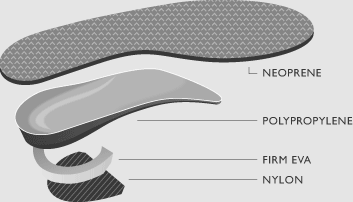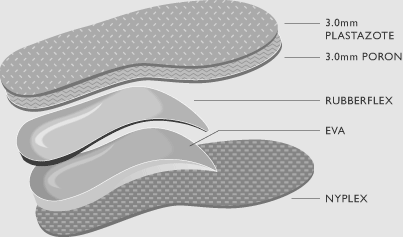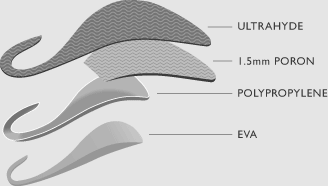Typical Assessment
| Stride Orthopaedics & Footwear's Certified Pedorthists base their initial assessment on a standard protocol.
At Stride Orthopaedics & Footwear, our custom foot orthoses are manufactured from a three dimensional plaster cast, of a semi-rigid to rigid material (typically polypropylene) depending on the age, weight, footwear, and activity level of the individual, combined with their diagnosis from the Doctor. All effort is made to educate the client on the nature of their condition, and the importance of appropriate footwear in combination with the prescribed device. The client is also educated on the use of the orthoses, as a comprehensive treatment is achieved with daily wearing during all weight bearing activities. Each client is educated on the importance of footwerar as a treatment for their individual situation. Foot orthoses only function as well as the footwear they are worn in. A properly fit shoe, boot or sandal will accommodate the foot orthoses as well as the appropriate length, width, depth and structural anomalies that are present in the client's foot. All of the staff at Stride Orthopaedics & Footwear are trained to fit footwear for a variety of special needs. To learn more about the footwear options available click here. | Biomechanical Assessment
Plaster of Paris Casing
Semi-Weight Bearing Foam Impressions |
| Once a client has received their foot orthoses, a gradual break-in process is recommended. This typically consists of wearing the orthoses in appropriate footwear for one hour of weight bearing activity for the first day. An additional hour of wear time is added on each subsequent day until the client is wearing the orthoses comfortably during all weight bearing activities. It is not unusual for a client to notice some discomfort in accommodating to the new orthoses, as body alignment and movement have been modified, similar to an individual getting used to a pair of new eye glasses. Blisters and significant discomfort are not usual, and should be addressed immediately. Communication between the client, their treating CPed(C), and the referral source are extremely necessary for a successful treatment. Should problems or questions arise, the client should contact Stride Orthopaedics & Footwear immediatly. |
|










